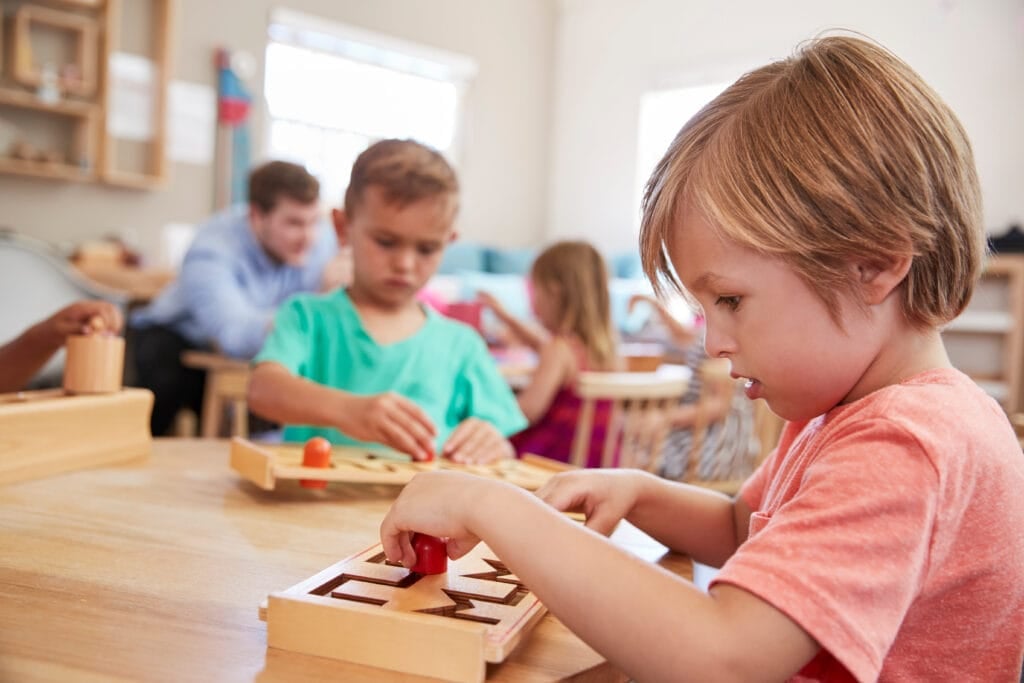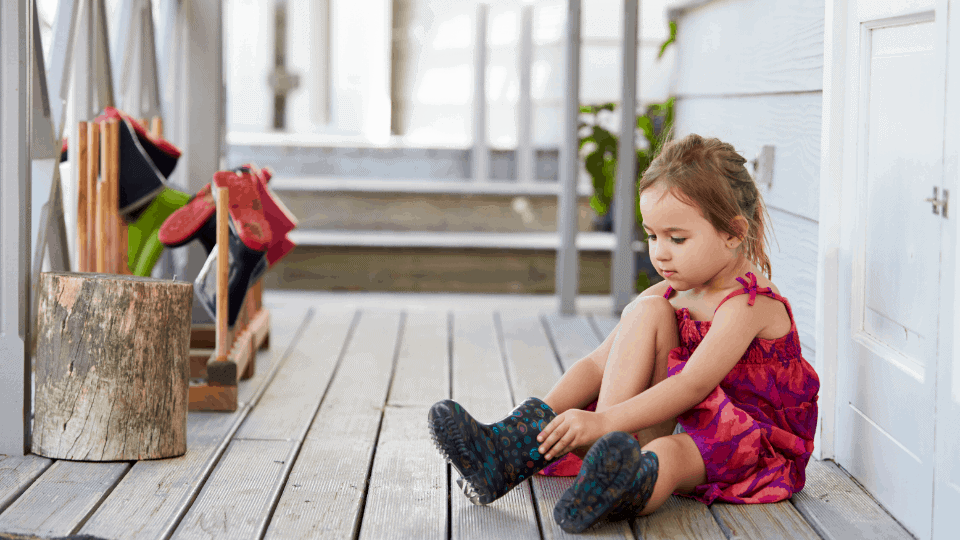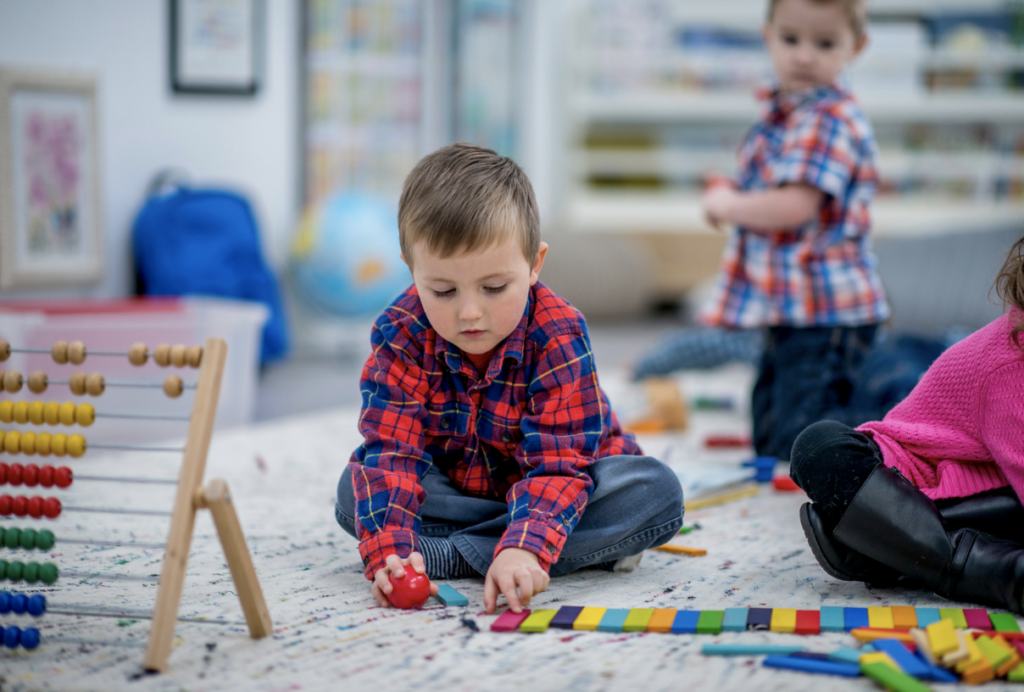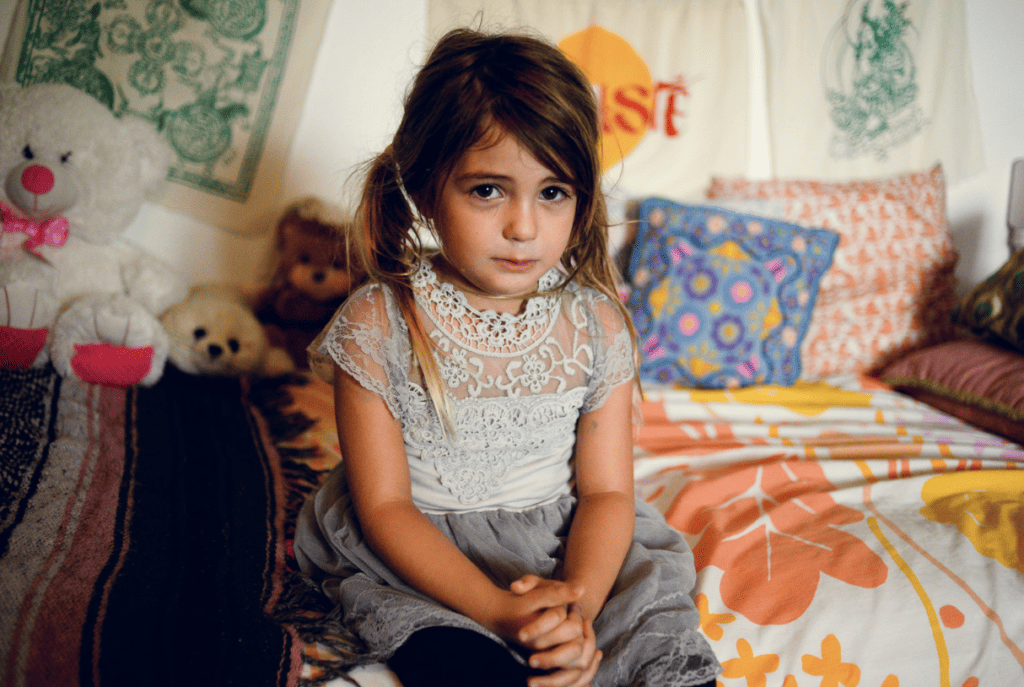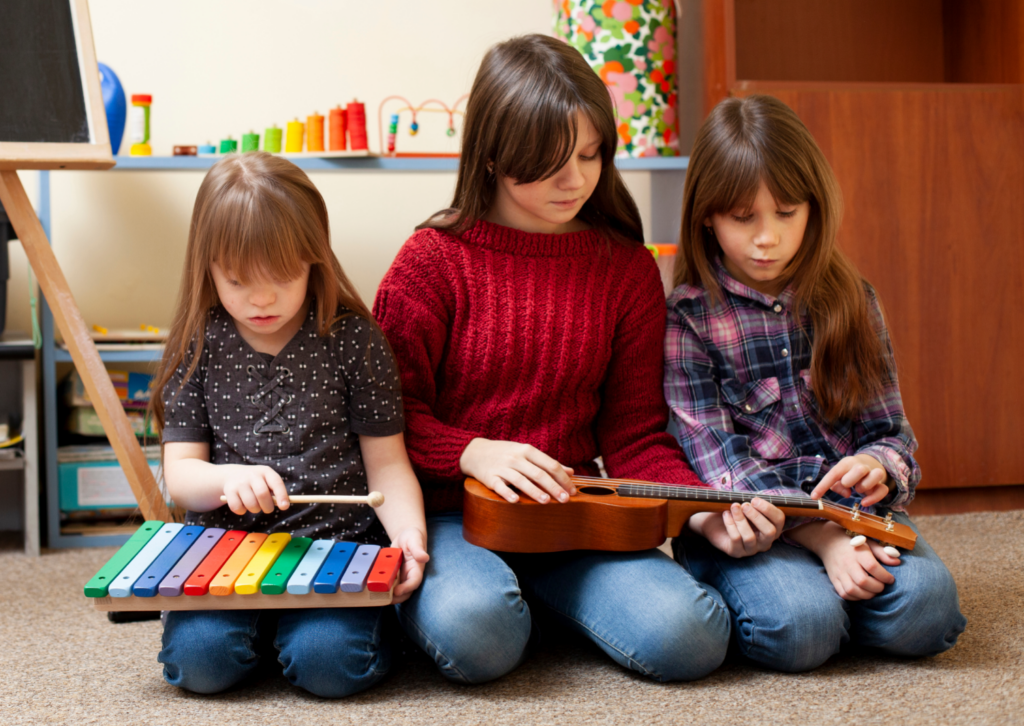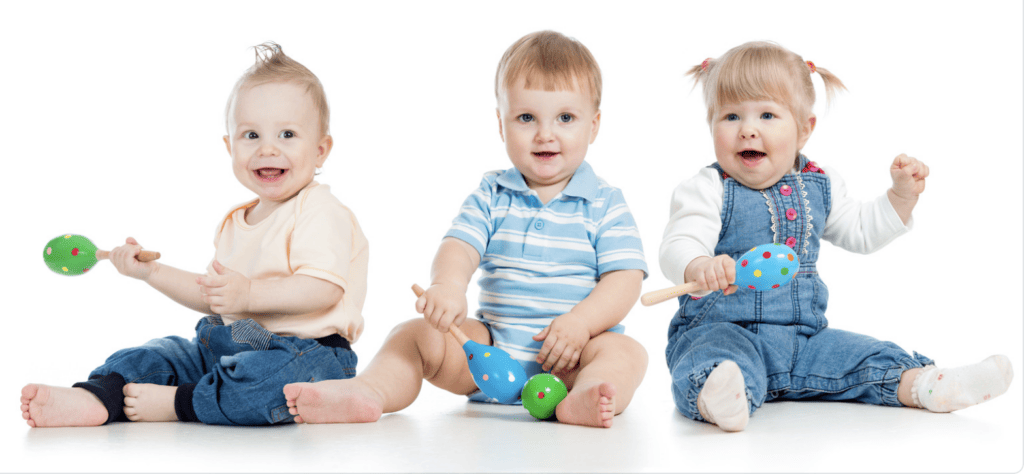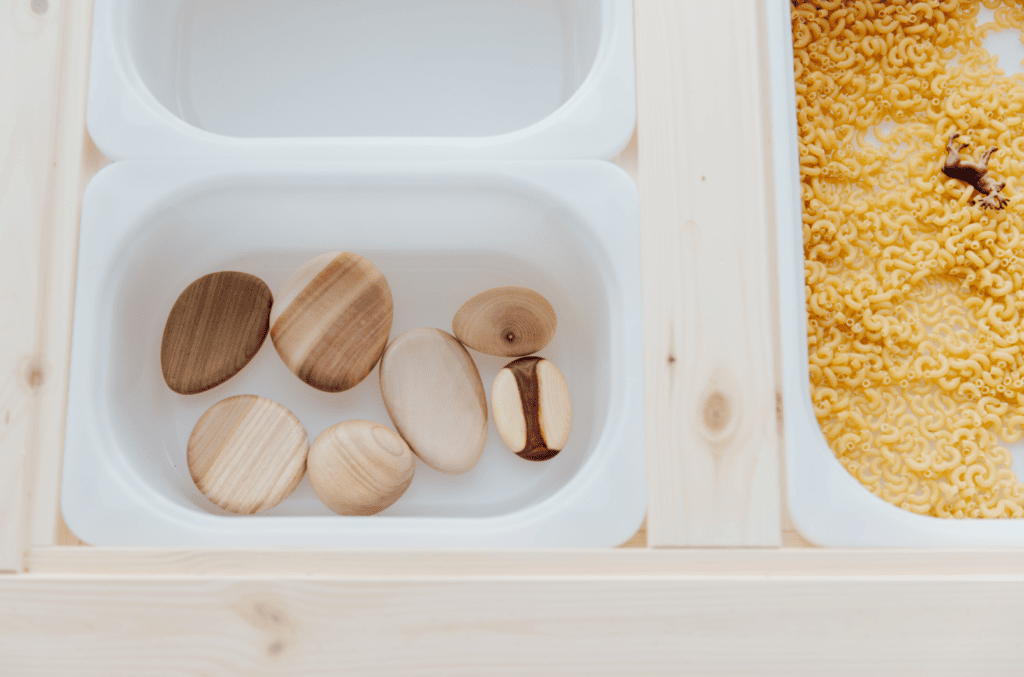
Trying to find effective
Montessori sensory tables engage learning in a natural way. For example, having a nature table with actual leaves, sticks, rocks, and dirt gives children an immersive experience. A table where kids can touch fabrics like silk or sequins and learn about different textures is also
Even though a sensory table may not exactly be a
Best Montessori Sensory Tables
First, let’s look at the actual tables themselves. If you enjoy DIY projects, there are plans available to build your own sensory table.
If you’d rather purchase one, there are several good options available in a more natural
There are multiple sensory table options available on Etsy, some that can even be customized to your specifications.
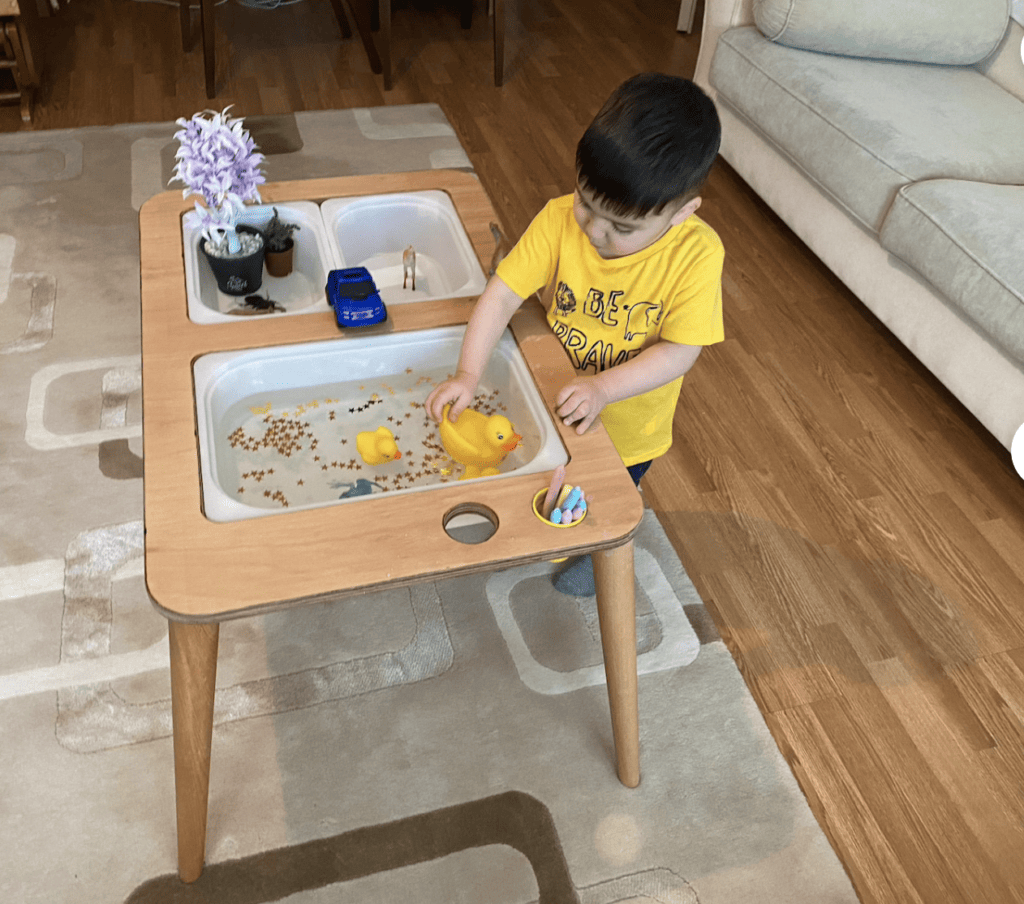
Montessori for Today picks out furniture, educational tools, toys and lifestyle items that we think are the best and most exciting, based on independent research and careful consideration. On some occasions we earn revenue (at no additional cost to you) if you click the links and buy the products. But this doesn’t affect what we choose to highlight and we will never let it bias our coverage.
This large sensory table with shelf is one of the more expensive options, BUT it has some cool features such as the bottom storage shelf, extra durable construction, and rolling casters for easy mobility.

Once you have your sensory table, how do you prepare the environment for your child? What is the best way to incorporate
Montessori Activities: Importance
The purpose of Montessori activities is to allow a child to experience and learn about their environment in natural ways. Many times, the activities that are presented within a classroom are designed to isolate a certain skill. In the Practical Life station, a child can practice pouring water from a pitcher to a cup. This helps to isolate the skill of eye and hand coordination. Along with this, a child is also naturally developing their gross motor skills. These are the types of activities that are important for
Sensory tables aren’t typically used in
Related: Why Sensorial Work is so Important in Montessori
Although there are different textures or environments to interact with, it doesn’t isolate certain skills. This lack of isolation makes it more difficult for a child to engage with those activities and materials in a meaningful way. So, if you want to make a
As you probably know, everything that is used in
So, let’s get started! We’ll talk about some different ideas that you can use to create an effective
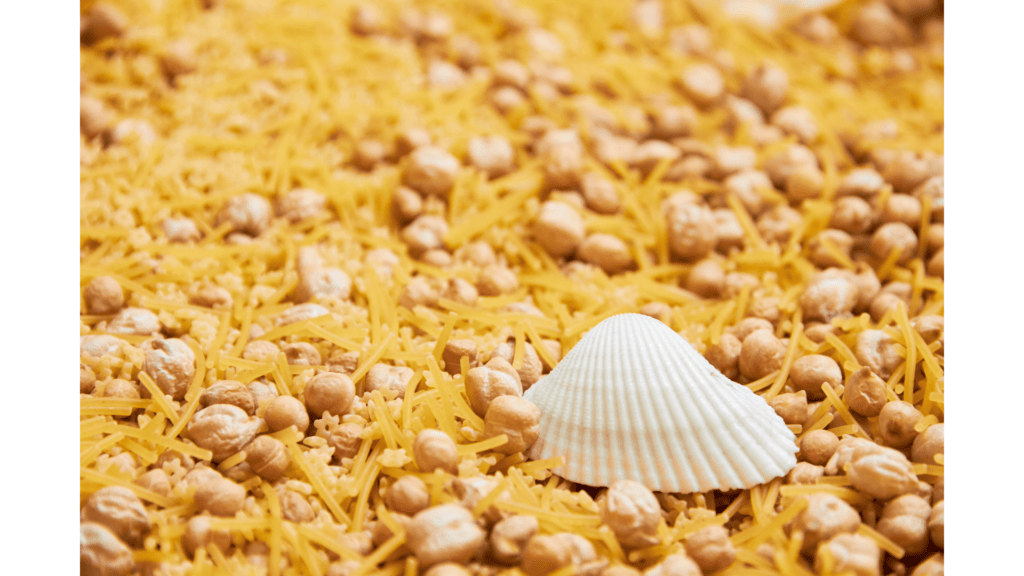
Creating a Montessori Sensory Table
Creating a
Nature Sensory Table
Nature is such an important aspect of
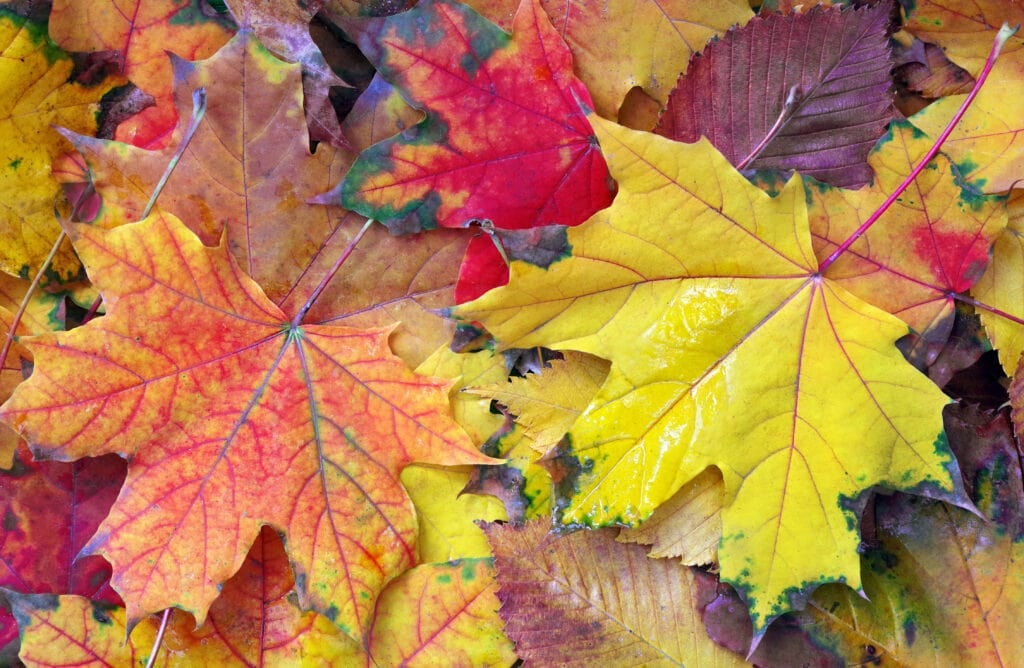
The pinecone will help them to engage their sense of touch, but also their sense of smell. They can smell the woodiness of the pinecone. You can also have a variety of leaves for the kids to touch, feel, and smell. They can look at the differences in color, feel the differences in texture, and even hear the difference in sound when they rub them in their hands.
Another possible activity to do with a nature sensory table is to have a specific theme. If you are learning about the ocean that day, having a sensory table filled with different seashells and mollusks is a great way for them to learn more concretely about the ocean. They can feel the different shells and learn their names.
Fabric Sensory Table
For another option, you could also use a sensory table for fabrics. You could have different types of fabric for the children to feel. You could have a sample of silk, one of velvet, and one that has sequins on it. The children will learn about different textures and how they feel on the skin. You can create a matching game for this type of sensory table which helps them to test their mental recall for which fabrics are which.
If you have an older group of children you are working with, you can create a sensory table where they can practice using the different materials to dress a doll. This will help them to learn how different fabrics work, and which ones might be easier than others. For example, using silk to create a dress for a doll is going to be easier than working with something bulkier, like fleece.
Water Sensory Table
You may think that a water sensory table would be the perfect idea for this. However, you can do this already at the
However, having a sensory table that can also function as a water table can be enjoyable for your child.

Sensory Table Tools and Accessories
The most common items used with sensory and water tables are usually items you can already find in your home, such as kitchen utensils, cups, scoops, tongs, etc. However, there are sets of child-sized wooden sensory bin tools available for purchase.

Conclusion
These are just a few ideas, so if you have any that you think follow


